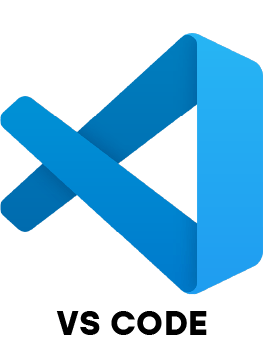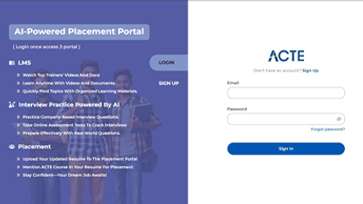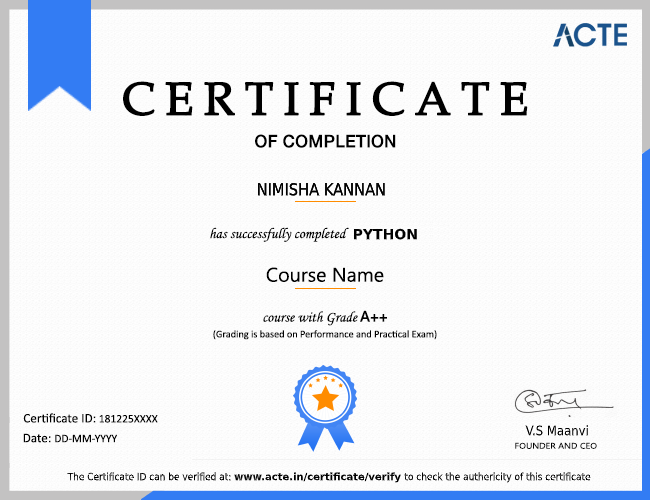- Join Data Science and AI Training Institute in Chennai to gain AI and Data Science tools and technologies.
- Our Data Science and AI Course in Chennai Covers Basics Concepts to Advanced Applications.
- Choose Learning Mode With Flexible Weekday, Weekend or Fast-track Batches.
- Work on Real-time Projects Under Expert Guidance to Gain Practical, Hands-on Experience.
- Earn a Recognized Data Science and AI Certification With Placement Assistance.
- Get Personalized Career Support, Including Resume Building, Interview Preparation.
Join Our 100% Job Guaranteed
Data Science and AI Training in Chennai
WANT IT JOB
Become a AI Engineer in 3 Months
Freshers Salary
3 LPA
To8 LPA
Quality Training With Affordable Fees in Chennai!

11645+
(Placed)
5764+
(Placed)
7834+
(Placed)
4978+
(Placed)Our Hiring Partners




Overview of The Data Science and AI Course
The Data Science and AI Training in Chennai helps beginners build strong skills in AI, machine learning and data analytics through step-by-step learning. Our Data Science and AI Course in Chennai is designed for freshers to easily understand real-world concepts and tools. You will gain practical knowledge through live projects and Data Science and AI Internships in Chennai that prepare you for industry needs. The course also offers hands-on sessions, expert mentorship and a clear learning path from basics to advanced topics. With dedicated Data Science and AI Placement support, you can confidently start your career in this fast growing field. Join now to learn, practice and grow in the world of Data Science and AI.
What You'll Learn From Data Science and AI Training
Start your learning journey with the Data Science and AI Training in Chennai, gaining expertise in Python, Machine Learning and Data Visualization from scratch.
Learn how to collect, clean and analyze data using popular tools and techniques applied in real-world scenarios.
Work on hands-on projects and case studies that help you apply AI and Data Science concepts to solve practical business problems.
Understand key areas such as predictive modeling, deep learning and data-driven decision-making with step-by-step guidance.
Develop programming and analytical skills that prepare you for Artificial Intelligence and Data Science and AI and real industry challenges.
Earn an industry-recognized certification that supports your Artificial Intelligence and Data Science placement and career growth opportunities.
Additional Info
Course Highlights
- Kickstart your Data Science and AI journey with our all-in-one Artificial Intelligence and Data Science Course in Chennai, covering Python, Machine Learning, Deep Learning and Data Visualization.
- Get complete career assistance with Data Science and AI placement opportunities from top companies actively hiring skilled professionals.
- Join a growing community of over 11,000 learners successfully trained and placed through our network of 350+ hiring partners.
- Learn directly from expert trainers with 10+ years of real-world experience in Artificial Intelligence, Data Analytics and Automation.
- Gain practical exposure through beginner-friendly sessions, real-time projects and personalized career mentorship to guide your learning path.
- Take advantage of flexible batches, affordable course fees and 100% placement support perfect for freshers and career switchers.
Benefits You Gain from an Data Science and AI Training in Chennai
- Better Decision Making – By precisely evaluating data, artificial intelligence and data science assist organizations in making quicker and more intelligent decisions. They spot patterns and trends that boost efficiency, lessen uncertainty and improve planning. With these information, businesses may effectively meet client wants and promptly adjust to changes in the market.
- Career Growth Opportunities – Learning Artificial Intelligence and Data Science opens up wide range of career opportunities in top industries. Freshers can start as data analysts, machine learning engineers or AI developers. These skills are highly appreciated in industries including banking, healthcare and marketing. AI continues to advance, the demand for experienced individuals keeps increasing, delivering significant job security and high wages.
- Real-World Problem Solving – Data science and artificial intelligence are strong instruments for resolving practical issues, such as enhancing corporate performance or forecasting illness. They help organizations save time, cut costs and enhance efficiency through data driven solutions. Learners get hands-on experience in applying these concepts to real projects. This practical learning approach prepares them to tackle challenges in various industries.
- Improved Efficiency and Automation – AI brings automation to repetitive and time-consuming tasks, reducing human error and boosting productivity. It enables professionals to shift their attention from mundane tasks to creativity and strategic thinking. Automation ensures faster and more accurate results in business operations. As a result, companies achieve better performance and long-term efficiency.
- High Demand and Job Security – Artificial intelligence and data science are two of the most in-demand employment sectors in today's digital world. Experts with the ability to efficiently handle and analyze data are essential to organizations in every industry. Excellent job stability and growth possibilities are provided by this strong demand. Freshmen can create a career that is prepared for the future and offers significant international chances by being proficient in these technologies.
Popular Tools Taught in Data Science and AI Course
- Python – Python is one of the most popular tools used in Artificial Intelligence and Data Science. With robust libraries like NumPy, Pandas and Scikit-learn for data analysis and machine learning, it is simple to learn. Python helps in building AI models, data visualization and automation. Its flexibility makes it perfect for beginners and professionals alike.
- TensorFlow – Google created the robust open-source TensorFlow framework for creating and refining deep learning and machine learning models. It helps developers create smart applications that can recognize patterns, images and voices. TensorFlow is widely used for AI projects like chatbots, recommendation systems and image classification. It’s an essential tool for anyone learning Artificial Intelligence.
- R Programming – R is a statistical programming language that's used for mapping, data analysis and forecasting. It is especially helpful for Data Science students who want to understand data trends through charts and graphs. R supports advanced data manipulation and is great for research-based projects. It helps learners easily perform statistical operations on large datasets.
- Jupyter Notebook – The interactive Jupyter Notebook environment makes it simple to write, execute and view code. It is mainly used for learning, experimenting and sharing AI and Data Science projects. Users can combine code, text and visuals in one place, making it perfect for students and professionals. It helps in documenting and presenting your data analysis clearly.
- Power BI – Power BI is a data visualization solution which assists users turn raw data into useful insights through interactive dashboards and reports. It is easy to use and supports data connections from multiple sources. Power BI helps businesses make smart decisions based on real-time analytics. For beginners in Data Science, its a great tool to understand how to present data visually and effectively.
Top Frameworks Every Data Science and AI Should Know
- TensorFlow – TensorFlow is one of the most widely used frameworks for Artificial Intelligence and Data Science. It was created by Google and makes it simple to create and train machine learning and deep learning models. It supports image recognition, natural language processing and predictive analytics. With its strong community and flexibility, TensorFlow is ideal for both beginners and experts.
- PyTorch – PyTorch, developed by Facebook, is a popular framework used for deep learning and AI research. It offers an easy-to-understand interface and dynamic computation, making model building simpler. Many data scientists prefer PyTorch for experimenting with neural networks and automation. Its strong support for GPU acceleration helps in faster model training and testing.
- Scikit-learn – A simple and easy-to-use framework for data science and machine learning tasks is called Scikit-learn. It has tools for clustering, regression, classification and preprocessing data. For beginners who wish to gain a practical understanding of algorithms, this framework is ideal. For effective data handling, it also works well with other programs such NumPy and Pandas.
- Keras – A high-level neural network framework called Keras makes deep learning straightforward and user-friendly. It runs on top of TensorFlow and allows users to build AI models with fewer lines of code. Keras is especially useful for students and beginners who want to quickly create and test models. Its user-friendly interface helps in learning AI concepts faster.
- Apache Spark – A potent framework for processing and analyzing large amounts of data in data science is Apache Spark. Compared to conventional tools, it can handle big datasets effectively and complete computations far more quickly. Spark facilitates real time data analytics, graph processing and machine learning. It is widely used by data scientists and engineers to effectively manage and analyze massive amounts of data.
Essential Skills You’ll Learn in an Data Science and AI Course in Offline
- Programming Skills – In Artificial Intelligence and Data Science, programming is one of the most important skills to learn. Languages like Python and R help you write code for data analysis, automation and AI model creation. These skills allow you to process large amounts of data and build intelligent systems. With strong programming knowledge you can easily work on real time projects and solve practical problems.
- Data Analysis and Visualization – Data analysis and visualization help you understand data patterns and present them clearly. Converting raw data into useful charts and graphs is made simpler by programs like Power BI, Tableau and Matplotlib. This skill helps you explain your findings to others in a simple way. Its essential for making informed decisions and improving business strategies.
- Machine Learning Knowledge – Machine learning is the cornerstone of both artificial intelligence and data science. It teaches you how to create systems that are capable of making predictions and learning from data. Regression, classification and clustering algorithms will become clear to you. Acquiring this ability enables you to develop models that can automatically resolve real-world issues.
- Statistical and Mathematical Skills – Strong foundation in statistics and mathematics is important for understanding how AI and data models work. Models are trained and evaluated using ideas from calculus, linear algebra and probability. These skills help in accurate data interpretation and prediction. They also allow you to choose the right algorithms for specific tasks.
- Problem-Solving and Critical Thinking – Problem-solving is a key skill in Artificial Intelligence and Data Science, as it helps you approach challenges logically. You’ll learn to analyze issues, identify solutions and implement them using data driven methods. Critical thinking allows to evaluate results and make better decisions. With these skills, you can handle complex projects confidently and effectively.
Key Roles and Responsibilities of Data Science and AI Profession
- Data Scientist – Large data sets must be gathered, examined and interpreted by a data scientist in order to assist organizations in making wise decisions. To gain insights, this position uses programming, statistical tools and visualization strategies. Data scientists create predictive models and identify patterns that inform corporate strategy. In order to turn unstructured data into information that can be used to make decisions, they are essential.
- Machine Learning Engineer – The primary focus of a machine learning engineer is the development, implementation and design of algorithms that allow systems to learn on its own. This role requires strong knowledge of programming, mathematics and data structures. Engineers work on developing AI models that can predict outcomes or automate tasks. Their main goal is to make systems smarter and more efficient using machine learning techniques.
- AI Engineer – The creation of intelligent systems capable of speech processing, image recognition and decision making is the responsibility of an AI engineer. This role includes creating AI models using frameworks like TensorFlow and PyTorch. AI Engineers also test and improve algorithms to ensure accuracy and performance. They work closely with data scientists to integrate AI solutions into real-world applications.
- Data Analyst – A Data Analyst examines datasets to identify patterns, trends and relationships that support business goals. The job involves using tools like Excel, Power BI or Tableau to visualize data and present findings clearly. Data Analysts prepare reports and dashboards that help management make better decisions. They play an important part in turning data into actionable insights.
- Research Scientist (AI and Data Science) – A Research Scientist in AI and Data Science works on developing new algorithms, models and technologies to advance artificial intelligence. This role involves conducting experiments, analyzing results and publishing research papers. Research Scientists collaborate with developers and engineers to test innovative ideas. Their contributions help improve AI applications and shape the future of intelligent systems.
Why Data Science and AI Is the Smart Choice for Freshers
- High Career Demand – Artificial Intelligence and Data Science are among the fastest-growing fields in today’s job market. Companies across industries are actively hiring skilled professionals to handle data and automation tasks. The demand for fresh talent continues to rise as more businesses rely on AI-driven solutions. This makes it a great field for beginners to start a secure and rewarding career.
- Excellent Salary Packages – Jobs in Artificial Intelligence and Data Science offer some of the highest-paying roles for freshers. Organizations are willing to pay well for professionals who can analyze data and build intelligent systems. With the right skills and training, beginners can quickly move into higher positions. The combination of skill demand and attractive pay makes it a financially strong career choice.
- Wide Career Opportunities – Artificial Intelligence and Data Science open doors to many different job roles such as Data Analyst, AI Engineer, Machine Learning Developer and Research Scientist. These roles are available in industries like healthcare, finance, education and e-commerce. New hires can choose a career path that fits their interests because of the field's adaptability. It also gives them flexibility to change specializations as they develop.
- Practical and Engaging Learning – The field of AI and Data Science focuses on hands-on learning with real-world projects. It allows freshers to work on exciting challenges like predicting trends, automating systems or analyzing customer behavior. The use of modern tools and technologies makes learning interesting and practical. This approach builds confidence and helps students apply knowledge effectively in the workplace.
- Future-Proof Career – The future of innovation and technology is being shaped by data science and artificial intelligence. These abilities will be in high demand for many years to come as automation and data driven systems continue to advance. Freshers entering this field can look forward to stable and evolving career paths. It ensures long-term growth, job security and opportunities to work on cutting-edge technologies.
Landing Remote Jobs with Data Science and AI Skills
- Global Job Opportunities – Artificial Intelligence and Data Science skills open doors to remote jobs across the world. Companies from different countries hire professionals who can analyze data and build AI models online. These roles don’t require physical presence, making it easy to work from anywhere. With strong technical skills, freshers can access global projects and career growth without relocation.
- High Demand for Remote Talent – Many organizations prefer hiring remote AI and Data Science experts to handle digital tasks efficiently. As businesses move online, the need for data analysis, automation and AI integration increases. Skilled professionals can easily find remote roles in startups, tech firms or research companies. The rising demand ensures consistent job opportunities for those with the right skills.
- Flexibility in Work Environment – AI and Data Science careers allow professionals to work on projects independently from home or any location. While contributing to worthwhile projects, this adaptability aids in maintaining a healthy work-life balance. Tasks such as coding, data analysis and model building can be done remotely with online collaboration tools. It enables workers to efficiently manage their own time.
- Collaboration Through Technology – Modern tools like GitHub, Jupyter Notebook and cloud platforms make remote collaboration smooth and efficient. Data professionals can share code, analyze results and communicate with global teams in real time. These technologies support teamwork without the need for physical meetings. As a result, remote professionals can stay connected and productive from anywhere.
- Continuous Learning and Growth – The online world provides endless resources to upgrade AI and Data Science skills from home. Remote professionals can attend virtual workshops, webinars and certification courses to stay updated. This continuous learning helps improve job performance and career advancement. It allows professionals to grow in their roles while enjoying the convenience of working remotely.
What to Expect in Your First Data Science and AI Job
- Hands-On Project Work – The first Artificial Intelligence and Data Science job often involves working on real-world projects that apply classroom knowledge to practical situations. Tasks include collecting data, cleaning it and using it to build models or reports. These projects help in understanding how data is used to solve business problems. Its a great way to gain confidence and develop technical skills.
- Team Collaboration – Most AI and Data Science roles require working closely with developers, analysts and business teams. Collaboration helps in sharing ideas, solving problems faster and improving project results. Regular discussions and teamwork are common in every project. It teaches how to communicate effectively and contribute to group success.
- Learning New Tools and Techniques – The first job provides exposure to a variety of tools like Python, TensorFlow and Power BI. Learning how to use these tools efficiently becomes part of daily work. Each project introduces new methods and technologies that improve performance. This stage is all about exploring and mastering the right tools for data analysis and AI development.
- Real-World Problem Solving – Professionals in data science and artificial intelligence are expected to use data to solve actual business problems. Tasks may include predicting trends, optimizing processes or automating tasks. Problem-solving develops critical thinking and decision making skills. Every challenge helps in understanding how data impacts company growth.
- Continuous Learning and Improvement – The first job is a stepping stone for growth in Artificial Intelligence and Data Science. Continuous learning is essential as technology keeps changing rapidly. Staying updated with new tools, algorithms and trends helps in career advancement. Every experience contributes to becoming a skilled and confident AI professional.
Top Companies are Hiring for Data Science and AI Professionals
- Google – Google is a top global employer for experts in artificial intelligence and data science. It uses AI for products like Google Search, Assistant and Cloud services. Data experts at Google work on large-scale projects involving machine learning, automation and analytics. The company offers excellent learning opportunities and a strong career growth path.
- IBM – IBM is global leader in technology and innovation, offering many roles in Artificial Intelligence and Data Science. It focuses on areas like data analytics, automation and cognitive computing through its Watson AI platform. Professionals at IBM work on developing smart business solutions using data-driven insights. The company provides a supportive environment for continuous skill development.
- Amazon – Amazon recruits thousands of AI and Data Science professionals to improve its e-commerce, logistics and cloud computing operations. From product recommendations to Alexa voice services, AI plays a huge role in Amazon’s success. Data experts here work on large datasets to improve user experience and business efficiency. The company values innovation and provides global career opportunities.
- Microsoft – Microsoft is a leading technology company that invests heavily in Artificial Intelligence and Data Science research. It offers opportunities to work on products like Azure AI, Microsoft 365 and cloud-based analytics tools. Data professionals contribute to developing intelligent solutions that enhance productivity and business performance. Microsoft provides excellent growth prospects and work-life balance for AI specialists.
- Accenture – Accenture is global consulting and technology firm that employs AI and Data Science professionals for digital transformation projects. It helps businesses use data and AI to improve decision-making, customer experience and efficiency. Employees work on advanced analytics, machine learning and automation projects for clients worldwide. Accenture is known for its strong training programs and career development support.
Upcoming Batches For Classroom and Online
Who Should Take an Data Science and AI Course
IT Professionals
Non-IT Career Switchers
Fresh Graduates
Working Professionals
Diploma Holders
Professionals from Other Fields
Salary Hike
Graduates with Less Than 60%
Job Roles For Data Science and AI Course
Data Scientist
Machine Learning Engineer
AI Engineer
Data Analyst
Business Intelligence (BI) Analyst
Deep Learning Specialist
NLP (Natural Language Processing) Engineer
Computer Vision Engineer
Tools Covered in Data Science and AI Course in Offline








What’s included ?

📊 Free Aptitude and Technical Skills Training
- Learn basic maths and logical thinking to solve problems easily.
- Understand simple coding and technical concepts step by step.
- Get ready for exams and interviews with regular practice.

🛠️ Hands-On Projects
- Work on real-time projects to apply what you learn.
- Build mini apps and tools daily to enhance your coding skills.
- Gain practical experience just like in real jobs.

🧠 AI Powered Self Interview Practice Portal
- Practice interview questions with instant AI feedback.
- Improve your answers by speaking and reviewing them.
- Build confidence with real-time mock interview sessions.

🎯 Interview Preparation For Freshers
- Practice company-based interview questions.
- Take online assessment tests to crack interviews
- Practice confidently with real-world interview and project-based questions.

🧪 LMS Online Learning Platform
- Explore expert trainer videos and documents to boost your learning.
- Study anytime with on-demand videos and detailed documents.
- Quickly find topics with organized learning materials.
Data Science and AI Course Syllabus
- 🏫 Classroom Training
- 💻 Online Training
- 🚫 No Pre Request (Any Vertical)
- 🏭 Industrial Expert
Our Data Science and AI Training in Chennai offers a complete syllabus designed for beginners and aspiring data professionals. The Data Science and AI Course in Chennai covers important topics like Python programming, Machine Learning, Deep Learning and Data Visualization. Students gain hands-on experience through live projects and Data Science and AI Internships that build real world skills. The course also includes data preprocessing, model deployment and analytics tools for practical learning. In addition, dedicated placement support helps learners with resume building, interview preparation and job opportunities in top companies.
- Foundation in AI and Data Science – Begin by learning the core concepts of data collection, cleaning and analysis.
- Core Machine Learning and Deep Learning Concepts – Advance your skills by exploring supervised and unsupervised learning, neural networks.
- Hands-On Project Experience – Gain practical experience through real-time projects such as predictive modeling, image recognition and data visualization.
- Tools and Technologies – Learn to work with essential tools like Python, TensorFlow, Power BI and Jupyter Notebook for data analysis, model building and deployment.
Learn the core Python programming concepts for Data Science and AI:
- Introduction to Python – Syntax, Variables, Data Types
- Data Structures – Lists, Tuples, Dictionaries, Sets
- Functions & Loops – Defining Functions, Control Flow
- Libraries – NumPy, Pandas for data manipulation
Understand the fundamentals of R for statistical analysis:
- Introduction to R – Syntax, Data Types, Operators
- Data Frames and Vectors – Creating and Managing Data
- Statistical Functions – Mean, Median, Standard Deviation
- Data Handling – dplyr and tidyr packages
Learn techniques to visually interpret data insights:
- Matplotlib & Seaborn – Charts, Graphs and Plots
- Tableau Basics – Dashboards and Interactive Reports
- Plotly – Interactive Visualizations for Web
- Visual Storytelling – Representing Data Clearly
Master database concepts for handling structured data:
- Introduction to SQL – Queries, Joins and Functions
- Data Extraction – SELECT, WHERE GROUP BY
- Database Management – MySQL/PostgreSQL basics
- Integration – Connecting SQL with Python & R
Learn key machine learning algorithms and techniques:
- Supervised Learning – Regression, Classification
- Unsupervised Learning – Clustering, Dimensionality Reduction
- Model Evaluation – Accuracy, Precision Recall
- Tools – Scikit-learn and basic ML pipelines
Explore neural networks and AI development frameworks:
- Neural Network Basics – Perceptron, Activation Functions
- Frameworks – TensorFlow, Keras PyTorch
- Image & Text Processing – CNNs, RNNs NLP Basics
- Model Training & Optimization – Gradient Descent Epochs
Learn techniques to prepare data for AI and ML models:
- Handling Missing Data – Imputation Techniques
- Data Normalization & Scaling – StandardScaler, MinMaxScaler
- Feature Selection – Correlation, PCA
- Data Transformation – Encoding, Binning and Aggregation
🎁 Free Addon Programs
Aptitude, Spoken English.
🎯 Our Placement Activities
Daily Task, Soft Skills, Projects, Group Discussions, Resume Preparation, Mock Interview.
Gain Experience in Data Science and AI Projects
Project 1
Crop Disease Detection
Develop a plant disease detection system using Python, TensorFlow, and CNN models to analyze leaf images. Implement image classification and deep learning techniques.
Project 2
Sales Forecasting Dashboard
Develop an interactive Power BI dashboard powered by Python and ARIMA models. Analyze sales data trends and predict future sales for better business planning.
Project 3
Voice Emotion Recognition
Create an AI model using Python, Librosa and RNNs to detect emotions from speech. Process audio signals and classify emotions like happiness, anger or sadness.
Project 4
Spam Email Classifier
Build a spam detection system using Python, Scikit-learn and NLP techniques like TF-IDF. Train classification models to filter spam from genuine emails.
Project 5
Stock Market Sentiment Analysis
Combine Python, BeautifulSoup and NLP to scrape financial news and predict stock trends. Use sentiment scores and machine learning models for investment insights.
Placement Support Overview
Today's Top Job Openings for Data Science and AI Professionals
Junior Data Analyst
Company Code: TGR345
Chennai, Tamil Nadu
₹ 4.0 LPA – ₹ 6.0 LPA
B.Sc / B.Com / B.E.
Exp 0–2 years
AI & Data Science Associate
Company Code: ABC287
Chennai, Tamil Nadu
₹ 42,000 – ₹ 58,000 per month
B.Tech / B.E. – in Computer Science
Exp 0–2 years
Machine Learning Trainee (Data Science Track)
Company Code: DTA789
Chennai, Tamil Nadu
₹ 37,000 – ₹ 54,000 per month
B.Sc / B.E. / B.Tech – in Mathematics, Statistics
Exp 0–2 yearS
Data Engineer
Company Code: TSS923
Chennai, Tamil Nadu
₹ 42,000 – ₹ 67,000 per month
B.E./B.Tech – in Computer Science, IT or Data Engineering related
Exp 0–2 years
Business Intelligence & Data Science Analyst
Company Code: IGS598
Chennai, Tamil Nadu
₹ 33,000 – ₹ 50,000 per month
B.Sc / B.Com / B.E. – in Statistics, Analytics, Computer Science
Exp 0–2 yearS
AI Model Development Associate
Company Code: SAL312
Chennai, Tamil Nadu
₹ 42,000 – ₹ 58,000 per month
B.Tech / B.E. – in Computer Science, Electronics or allied engineering
Exp 0–2 years
Data Science Research Associate
Company Code: NGA657
Chennai, Tamil Nadu
₹ 4.0 LPA – ₹ 6.5 LPA
MSc / M.Tech / B.E. / B.Tech – in Data Science, Computer Science, Statistics or equivalent
Exp 0–2 years
Analytics & AI Solutions Developer
Company Code: VTA843
Chennai, Tamil Nadu
₹ 42,000 – ₹ 67,000 per month
B.E. / B.Tech / B.Sc – in Computer Science, Data Science or Math/Stats
Exp 0–2 year
Highlights for Data Science and AI Internships in Chennai
Real Time Projects
- 1. Gain hands-on experience by working on live Data Science and AI-based applications.
- 2. Understand real-world problem-solving through scenarios.
Skill Development Workshops
- 1. Participate in focused sessions on trending technologies and tools.
- 2. Learn directly from industry experts through guided practical exercises.
Employee Welfare
- 1. Enjoy benefits like health coverage, flexible hours, and wellness programs.
- 2. Companies prioritize mental well-being and work-life balance for all employees.
Mentorship & Peer Learning
- 1. Learn under experienced mentors who guide your technical and career growth.
- 2. Collaborate with peers to enhance learning through code reviews and group projects.
Soft Skills & Career Readiness
- 1. Improve communication, teamwork, and time management skills.
- 2. Prepare for interviews and workplace dynamics with mock sessions and guidance.
Certification
- 1. Earn recognized credentials to validate your Data Science and AI skills.
- 2. Boost your resume with course or project completion certificates from reputed platforms.
Sample Resume for Data Science and AI (Fresher)
- 1. Simple and Neat Resume Format
– Use a clean layout with clear sections like summary, skills, education, and projects.
- 2. List of Technologies You Know
– Mention skills like Machine Learning, Deep Learning, NLP, Computer Vision, Data Preprocessing, Model Evaluation, AI Optimization.
- 3. Real-Time Projects and Achievements
– Add 1–2 real-time projects with a short description and the tools used.
Top Data Science and AI Interview Questions and Answers (2025 Guide)
Ans:
The goal of the multidisciplinary field of data science is to employ methods from computer science, statistics and domain expertise to derive significant insights from massive data sets. It involves stages like collecting, cleaning, analyzing and visualizing data to support decision-making through techniques like machine learning and predictive analytics.
Ans:
- In supervised learning, where the inputs and outputs are known, the model is trained using labeled data. The system predicts results for new data by learning patterns.
- In Unsupervised Learning, the model works with unlabeled data and discovers hidden patterns, structures or groupings automatically using clustering or association techniques.
Ans:
Balance between model complexity and simplicity is represented by the bias-variance tradeoff. A model with high variance overfits by overreacting to slight changes in the training set, whereas a model with strong bias underfits by making unduly simplistic assumptions. Finding a medium ground to improve accuracy is the aim.
Ans:
Overfitting occurs when a model absorbs too much information from its training set, which may include outliers and random noise. While it performs well on the training set, it struggles to make accurate predictions on new or unseen data due to poor generalization.
Ans:
Some commonly used data visualization tools include Matplotlib and Seaborn in Python, known for their ability to create detailed charts and plots. Additionally Plotly is widely used for building dynamic, interactive graphs and dashboards that enhance data storytelling.
Ans:
Precision measures how accurately the model identifies positive results out of all predicted positives, focusing on correctness. Recall (or sensitivity) shows how well the model detects actual positive cases from the entire dataset. Together, they help evaluate the reliability of a classification model.
Ans:
A confusion matrix is table that compares expected and actual results to assess how well a categorization model performs. It includes True Positives (TP), True Negatives (TN), False Positives (FP) and False Negatives (FN), helping to measure accuracy and other performance metrics.
Ans:
Missing data can be managed in several ways. You can remove rows with null values if they’re minimal or use imputation techniques like replacing missing entries with the mean, median or mode. Advanced methods like KNN or decision tree imputation can predict missing values based on other data points.
Ans:
A machine learning technique called decision trees makes predictions using a structure resembling a flowchart. Branches show results, leaf nodes show final predictions and each node represents a judgment based on data attributes. Both classification and regression tasks make extensive use of it.
Ans:
By including a penalty term in loss function, regularization is a method for preventing overfitting in machine learning models. It limits overly complex models that fit training data too closely. Common types include L1 (Lasso) and L2 (Ridge) regularization which improve model generalization.
Company-Specific Interview Questions from Top MNCs
1. What motivates the interest in pursuing a role as a Data Scientist focused on Artificial Intelligence and Data Science?
Ans:
solving complex business problems using data-driven insights and intelligent automation. Working in AI and Data Science allows me to combine creativity with analytical thinking, where every dataset reveals opportunities for innovation. Motivated by the challenge of transforming raw information into predictive and prescriptive solutions that enhance decision-making, efficiency and user experience.
2. How can a recommendation system be developed to deliver personalized product or content suggestions to users?
Ans:
Analyzing user interaction data, including browser history, clicks, ratings and purchases, would be my first step. The method would employ content-based filtering to examine item characteristics and collaborative filtering to discover user-item similarities. Frameworks like Spark MLlib or TensorFlow Recommenders are what I would use for big datasets. Feedback loops would be used to continuously enhance the model and precision@k, recall@k and engagement uplift would be used for evaluation.
3. How would you evaluate the performance of a large-scale search ranking model?
Ans:
Evaluation begins with defining clear objectives typically user satisfaction and relevance. Metrics like precision, recall, NDCG and click-through rate measure ranking accuracy, while latency ensures user experience remains smooth. I would run offline validation and A/B testing to assess model impact under real conditions, ensuring results are statistically significant before full deployment.
4. What advantages come with earning a certification in Artificial Intelligence and Data Science?
Ans:
Certification validates both theoretical understanding and practical proficiency in AI, machine learning and data analytics. It demonstrates commitment to continuous learning, provides familiarity with modern tools such as TensorFlow, PyTorch and Power BI and enhances professional credibility. Additionally it helps people stand out in competitive job markets by bridging the gap between academic knowledge and practical application.
5. How would you approach improving user engagement for a digital product using data science techniques?
Ans:
I’d begin by defining engagement metrics like active users, retention rate or session duration. Using behavioral and demographic data, I’d perform exploratory analysis to identify usage patterns and drop-off points. Predictive models could highlight at-risk users and A/B experiments would test new features or content strategies. Insights would be visualized through dashboards, guiding iterative product improvements.
6. What technical and analytical skills are essential for success in AI and Data Science roles?
Ans:
Strong programming skills in Python or R are essential for model development and data manipulation. Knowledge of machine learning algorithms, statistical inference and big data tools like Hadoop or Spark ensures scalability. Additionally, visualization skills using Power BI or Tableau help communicate findings effectively. Critical thinking and business acumen are equally vital to translate analytics into actionable solutions.
7. Describe a time you handled conflicting feedback regarding a model or analysis you developed.
Ans:
In a previous project, my predictive model was questioned by stakeholders for being too conservative. I listened to their concerns, revisited the model assumptions and thresholds and aligned definitions of success metrics. After refining features and recalibrating the output, the revised model achieved better balance between accuracy and usability. This experience taught me the value of transparency, collaboration and adaptability.
8. How do you handle missing or inconsistent data during model development?
Ans:
I begin by identifying the pattern and extent of missingness to understand whether data is random or systematic. Depending on the context, I may use techniques like mean or median imputation KNN-based estimation or predictive modeling for imputation. For time-series data, interpolation or forward fill can work well. I also create binary flags to record missing entries, ensuring the model captures data reliability as a feature.
9. Can you explain the bias-variance trade-off in machine learning?
Ans:
The bias-variance trade off refers to finding the optimal balance between model complexity and generalization. High bias causes underfitting, which occurs when a model is too simplistic to capture relationships. Overfitting, in which the model does well on training data but badly on new data, is brought on by high variation. Finding the ideal trade off guarantees that the model learns fundamental patterns without memorizing noise, resulting in reliable performance in the actual world.
10. How would you design an experiment to evaluate the impact of a new AI-driven feature?
Ans:
I’d begin by defining the key success metric such as user engagement, conversion rate or task completion time. Then, I’d create control and treatment groups to compare the feature’s performance under real-world conditions. Randomization ensures unbiased results and A/B testing provides statistical confidence in outcomes. After analyzing the results using hypothesis testing, I’d interpret the findings to guide product rollout or further optimization.
1. What is the primary goal of applying Artificial Intelligence in data-driven projects?
Ans:
The main objective of integrating Artificial Intelligence into data-driven projects is to enable systems to learn from patterns, automate decision-making and enhance operational efficiency. By leveraging AI algorithms, vast datasets can be analyzed to uncover trends, predict outcomes and optimize business processes. This ultimately leads to faster insights, improved accuracy and smarter automation across different domains.
2. How does data preprocessing contribute to building reliable machine learning models?
Ans:
Data preparation significantly improves the performance and quality of machine learning models. To get rid of noise and inconsistencies, raw data must be cleaned, processed and arranged. Proper preprocessing reduces the possibility of bias and mistake by assuring that models are trained on accurate and well-organized inputs. By employing techniques like normalization, encoding and feature scaling, models can converge faster and produce predictions that are more accurate.
3. How would you differentiate between supervised learning and unsupervised learning?
Ans:
Utilizing the labeled data to train algorithms, supervised learning enables models to discover the correlation between known outputs and input variables. Regression and classification tasks are examples of common uses. On the other hand, unsupervised learning searches for hidden patterns, groupings or structures using unlabeled data. Typical examples are dimensionality reduction and clustering. Depending on whether the problem includes investigation or prediction both strategies are crucial.
4. What techniques are most effective for handling class imbalance in machine learning datasets?
Ans:
Ensuring that models perform equitably across all categories requires addressing class imbalance. Common techniques include oversampling the minority class using methods such as SMOTE, undersampling the majority class and employing ensemble approaches like balanced random forests. Adjusting class weights within algorithms can also help models give equal importance to all outcomes, improving overall accuracy and recall in skewed datasets.
5. How can feature selection improve the performance of AI and data science models?
Ans:
By finding and keeping only the most pertinent input variables, feature selection improves model efficiency. Models become simpler and easier to understand when unnecessary or redundant elements are eliminated. This method reduces overfitting, reduces training time and frequently increases prediction accuracy. To obtain the best feature subsets, methods like regularization-based selection, correlation analysis and recursive feature removal are frequently used.
6. What role does Natural Language Processing (NLP) play in AI-driven solutions?
Ans:
Natural Language Processing enables machines to understand, interpret and respond to human language, making it a vital component of AI applications. It powers a range of use cases including chatbots, sentiment analysis, text summarization and voice recognition. Through tokenization, lemmatization and deep learning-based embeddings, NLP models transform textual data into meaningful patterns that can enhance user interaction and automate communication-based tasks.
7. How can overfitting be prevented during model training?
Ans:
When a model performs remarkably well on training data but is unable to generalize to new inputs, this is known as overfitting. Preventive strategies include using techniques like cross-validation, dropout, regularization (L1/L2) and early stopping. Simplifying model architecture or expanding the dataset with augmentation also helps achieve better generalization. The goal is to strike a balance between fitting known data and maintaining adaptability to unseen information.
8. What key elements need to be evaluated before choosing an algorithm for a data science project?
Ans:
Selecting the right algorithm depends on multiple factors, including the nature of the problem, data volume, dimensionality and computational resources. The choice is also influenced by the need for interpretability, scalability and real-time performance. For example linear models work well for simple relationships, while ensemble or deep learning methods suit complex, high-dimensional data. Experimentation and evaluation using metrics help determine the optimal fit.
9. How is model performance typically evaluated in AI and machine learning projects?
Ans:
Metrics that are in line with the project's goals are used to gauge model performance. Accuracy, precision, recall, F1-score and ROC-AUC are frequently used metrics for classification tasks. RMSE, MAE and R-squared metrics are used to evaluate regression models. In addition to numerical measurements, the model's robustness under various conditions, interpretability and business impact are assessed to make sure it works well in practical situations.
10. What are some challenges commonly faced during AI model deployment and how can they be managed?
Ans:
AI model deployment often faces issues such as data drift, scalability limitations and integration with existing systems. These challenges can be addressed by establishing continuous monitoring pipelines, automating retraining processes and ensuring compatibility with cloud or container environments. Maintaining consistent model governance and version control also ensures reliability, compliance and long-term success of deployed AI solutions.
1. What are the key phases that make up the lifecycle of a data science project?
Ans:
Typically, a data science project starts with problem formulation and data collecting and moves through multiple stages. To guarantee accuracy and consistency, pertinent data is cleaned and preprocessed after it has been collected. Model selection, feature engineering and exploratory data analysis are the following stages. The finished model is put into production after training and assessment and accuracy is maintained over time through ongoing monitoring and performance adjustment.
2. How does Artificial Intelligence contribute to improving business operations?
Ans:
Artificial Intelligence enhances business operations by automating repetitive processes, predicting outcomes and uncovering insights from vast amounts of data. It enables smarter decision-making through predictive analytics, natural language understanding and computer vision applications. AI-driven automation reduces manual effort, improves accuracy and accelerates productivity, ultimately helping organizations optimize efficiency and deliver more personalized customer experiences.
3. How important is data cleaning in the overall workflow of AI and machine learning projects?
Ans:
One of the most important stages in getting datasets ready for AI and machine learning applications is data cleaning. It entails controlling outliers, eliminating duplication, identifying and fixing missing values and guaranteeing consistency across all features. Clean data lowers the possibility of producing false results and aids models in learning proper relationships. Even the most sophisticated algorithms can yield skewed or incorrect results without adequate data cleaning, which is why this phase is essential to any data science workflow.
4. How do deep learning models differ from traditional machine learning models?
Ans:
Deep learning methods use multi-layered neural networks to automatically extract hierarchical features from unprocessed input. Unlike traditional machine learning models, which rely heavily on manual feature engineering, deep learning networks learn representations directly from inputs such as images, text or audio. This allows to handle complex, high-dimensional data effectively, particularly in tasks such image recognition, speech analysis and natural language processing.
5. What approaches can be used to evaluate the accuracy of a classification model?
Ans:
While the ROC-AUC curve aids in evaluating the trade-off between sensitivity and specificity, the F1-score strikes a balance between precision and recall. While precision and recall offer more in-depth information on how effectively the model detects true positives, accuracy gives a broad idea of accurate predictions. While the F1-score balances precision and recall, the ROC-AUC curve helps assess the trade-off between sensitivity and specificity. These measurements guarantee a thorough assessment of a model's efficacy.
6. What are some typical obstacles encountered when applying AI technologies in practical settings?
Ans:
Implementing AI solutions often involves challenges such as data scarcity, inconsistent data quality and high computational requirements. Additionally, issues related to model interpretability, ethical considerations and bias mitigation are common. Integrating AI systems with existing infrastructure can also be complex. Overcoming these challenges requires robust data governance, scalable architectures and continuous monitoring to ensure transparency, fairness and long-term reliability of AI-driven systems.
7. How does feature engineering improve the predictive power of models?
Ans:
Feature engineering enhances model performance by transforming raw data into meaningful input variables that better represent underlying patterns. It involves techniques such as creating interaction terms, polynomial features and domain-specific transformations. Properly engineered features allow algorithms to capture complex relationships, leading to higher accuracy and generalization. This process also reduces noise and redundancy, enabling the model to focus on the most influential factors affecting predictions.
8. How is reinforcement learning different from supervised learning?
Ans:
The goal of reinforcement learning is teach an agent to interact with its surroundings and make successive decisions through trial and error. The agent learns by receiving feedback in the form of rewards or penalties. In contrast, supervised learning relies on labeled datasets with predefined inputs and outputs. While supervised learning teaches direct mappings, reinforcement learning optimizes behavior over time, making it ideal for applications like robotics, game-playing and autonomous systems.
9. What is the significance of model interpretability in Artificial Intelligence applications?
Ans:
Model interpretability is essential for transparent and reliable AI-driven systems. It ensured that judgments are in line with moral and legal requirements and allows stakeholders to comprehend how forecasts are generated. In delicate fields like banking and healthcare, interpretability aids in identifying potential biases, confirming presumptions and defending results. To make model decisions easier to understand, tools like SHAP, LIME and feature importance visualization are frequently employed.
10. How can cloud computing enhance the deployment of AI and data science models?
Ans:
Cloud computing provides scalable infrastructure and computing resources necessary for deploying and maintaining AI models efficiently. It allows seamless integration with data storage systems, supports distributed training for large models and ensures accessibility across global environments. Cloud-based platforms offer automation tools for version control, monitoring and retraining, enabling faster experimentation and deployment while minimizing infrastructure costs and operational complexity.
1. What key distinctions exist between structured data and unstructured data?
Ans:
Structured data is easily searched and analyzed with SQL since it is arranged and stored in fixed formats like tables or databases. Conversely, unstructured data consists of text, photos, videos and social media posts without a clear schema. In order to extract significant patterns and insights from unstructured data, sophisticated methods like natural language processing or computer vision techniques are frequently needed.
2. How does Artificial Intelligence contribute to data-driven decision-making?
Ans:
By swiftly and effectively evaluating vast amounts of data, artificial intelligence assists organizations in making better decisions. Using both past and current data, it finds trends, forecasts results and suggests the best course of action. AI systems offer insights that direct tactics, boost productivity and improve consumer experiences using machine learning and deep learning algorithms.
3. What is feature selection and why is it important in model building?
Ans:
The process of determining the most pertinent variables that have a major influence on model performance is known as feature selection. It reduces data dimensionality, eliminates redundant or noisy features and speeds up computation. By focusing on the most informative attributes, feature selection improves the model’s accuracy, interpretability and generalization to unseen data, ensuring more reliable predictions.
4. How would you describe the concept of data normalization and explain why it is important?
Ans:
Data normalization is a preprocessing technique used to scale numerical values into a standard range, typically between 0 and 1. It ensures that no variable dominates others simply due to its magnitude. This process helps algorithms like gradient descent converge faster and improves the stability of models, especially those sensitive to feature scale, such as k-nearest neighbors and neural networks.
5. What are some common algorithms used in machine learning projects?
Ans:
Machine learning projects often use algorithms such as Linear Regression for predicting continuous outcomes, Decision Trees and Random Forests for classification, K-Means for clustering and Support Vector Machines for pattern recognition. Neural networks and Gradient Boosting methods like XGBoost are also popular for handling complex datasets that require deep feature learning and higher accuracy.
6. How does Natural Language Processing (NLP) work in AI applications?
Ans:
Machines can comprehend, interpret and produce human language thanks to natural language processing. Tokenization, stop-word elimination, stemming and sentiment analysis are just a few of the stages involved. Applications like chatbots, language translation and sentiment recognition are supported by methods like word embeddings and transformer-based models, like BERT or GPT that assist systems in processing context and meaning in text.
7. What strategies can be used to handle imbalanced datasets?
Ans:
Managing imbalanced datasets can be done through techniques like resampling, which involves oversampling the minority class or undersampling the majority class. To establish balance, techniques such SMOTE (Synthetic Minority Oversampling Technique) assist in creating synthetic data points. Moreover evaluating models using metrics like F1-score and AUC-ROC rather than accuracy offers a more reliable measure of performance.
8. How is model deployment managed in real-world AI projects?
Ans:
Model deployment involves integrating the trained AI model into production systems so it can make real-time predictions. The process includes model packaging, API creation and monitoring performance post-deployment. Tools such as Docker, Kubernetes and cloud platforms such as AWS or Azure streamline deployment by ensuring scalability, version control and consistent performance in diverse environments.
9. What are the main components of exploratory data analysis (EDA)?
Ans:
Exploratory Data Analysis includes examining datasets to summarize their main characteristics and uncover patterns. It typically involves data visualization, statistical summary generation and correlation analysis. Tools like Python’s Pandas, Matplotlib and Seaborn help detect outliers, missing values and variable relationships, enabling better data preparation and model selection for the next phase of the project.
10. What role does cloud computing play in Artificial Intelligence and Data Science?
Ans:
The infrastructure and processing capacity required to effectively train and implement big AI models are provided by cloud computing. It incorporates tools for ongoing model improvement, provides scalable storage and supports large data processing. For enterprise-level AI and data science initiatives, platforms like AWS, Google Cloud and Azure are essential because they facilitate collaboration, accelerate experimentation and lower costs.
1. What steps are followed in building a machine learning model for a large-scale e-commerce platform?
Ans:
The process begins by defining the business objective, such as improving product recommendations or optimizing pricing. Then, relevant data is collected from multiple sources and cleaned to ensure consistency. Feature engineering is performed to extract meaningful variables that influence the outcome, followed by model selection and training using algorithms like Random Forest or XGBoost. Finally, model performance is validated using metrics like precision, recall or AUC before deployment into a scalable production environment.
2. How can data-driven insights improve customer experience on an online retail platform?
Ans:
Data insights help understand customer behavior, preferences and buying patterns. By analyzing purchase history, browsing activity and reviews, companies can personalize product recommendations, offer relevant discounts and predict customer needs in real time. This leads to better engagement, reduced cart abandonment and increased customer satisfaction through a more tailored shopping experience.
3. What techniques are used to handle missing or inconsistent data in large datasets?
Ans:
Imputation, which replaces missing entries with mean, median or mode values and predictive model estimation are two methods for handling missing data. Inconsistent data is corrected through normalization and standardization techniques. Sometimes, records with excessive missing information are removed to prevent bias. Automation scripts and data validation rules also ensure long-term data accuracy.
4. Explain how recommendation systems work in an AI-based platform.
Ans:
Recommendation systems estimate user preferences through content-based filtering, collaborative filtering or hybrid approaches. Whereas content-based filtering concentrates on item qualities like category or description collaborative filtering examines commonalities in user behavior. To boost user engagement and sales conversion rates, machine learning algorithms analyze this data and produce personalized product or content recommendations.
5. How can natural language processing (NLP) be used in an e-commerce setting?
Ans:
Sentiment analysis, chatbots and customer care automation can all be powered by NLP. It aids in identifying feelings or ideas extracting keywords and interpreting customer evaluations. Analyzing reviews, for example, can reveal product problems or customer satisfaction levels. Additionally, chatbots that have been trained using NLP models offer prompt and pertinent answers to customer inquiries, improving communication and lowering support workload.
6. How is model performance monitored after deployment?
Ans:
Once deployed, models are continuously monitored to detect performance degradation or data drift. Metrics like accuracy, precision and recall are tracked over time. When deviations occur, retraining with updated data ensures the model stays relevant. Automated pipelines and dashboards are often set up to visualize model performance, ensuring stability and reliability in production.
7. Describe a situation where big data analytics plays a crucial role in business decision-making.
Ans:
By identifying patterns concealed inside enormous datasets, big data analytics assists companies in making well informed judgments. For example, analyzing real-time sales and customer traffic can help optimize inventory management, pricing and marketing strategies. Predictive analytics also allows anticipating future trends, ensuring business decisions are based on data-backed insights rather than assumptions.
8. What is the role of deep learning in visual data analysis?
Ans:
One kind of deep learning technique that is widely used for classification, object detection and image recognition is convolutional neural networks (CNNs). These models assist in automating tasks such as product labeling, visual search and counterfeit products detection in an e commerce setting. This improves the accuracy and scalability of visual data processing while requiring less manual labor.
9. How can reinforcement learning be applied in an AI-driven business model?
Ans:
Reinforcement learning uses ongoing feedback and outcome-based learning to optimize decision-making systems. It can be used for customized recommendations, dynamic pricing and supply chain management. The system becomes better over time by rewarding desired results, which results in more intelligent and effective automated decision-making.
10. How is ethical AI ensured in business processes?
Ans:
In order to preserve ethical AI, model design and implementation must be transparent, equitable and accountable. Diverse datasets are used to reduce bias and models are tested for fairness across demographic groupings. To keep an eye on AI activity and guarantee adherence to privacy and data protection regulations, robust governance frameworks are being put in place.
Disclaimer Note:
The details mentioned here are for supportive purposes only. There are no tie-ups or links with the corresponding PGs.
Ladies PG Accommodation
- Sanz Live Women's PG : 72007 19990
- Krishnaveni Castle : 90801 95007
- Pentos Women's PG : 93427 57797
- Women's Nest - Ladies PG : 94451 25894
- MSR Luxury PG : 89399 91922
- Sree Shakthi Ladies Hostel : 90031 98767
- Friends Ladies Hostel : 73389 19836
- CK HIVE Girls Ladies PG90948 58303
- Layaa Women’s Hostel63797 00573
Velachery
Anna Nagar
OMR
Porur
Tambaram
Mens PG Accommodation
- Stayflix PG for Men's : 96000 45088
- DJ Men's PG Velachery : 90803 19242
- Stay Inn Men's Hostel(PG) : 94454 87884
- Brights Boys Hostel : 88387 88921
- Sree Siddhi Vinayaka Mens PG : 95577 95579
- Rudhra Men’s PG : 93636 45199
- SIDDHANS Men's PG : 88259 71908
- Jaswanth Raaj Mens PG : 89255 15888
- Sri Sai Grn Men's PG : 81228 24076
- Rolexx Men's PG : 80988 84848
Velachery
Anna Nagar
OMR
Porur
Tambaram
Top Data Science and AI Job Opportunities for Freshers
- 1. AI/ML Developer Jobs at Startups and IT Companies
- 2. Campus Placements and IT Service Jobs
- 3. Internship-to-Job Programs
- 4. Apply Through Job Portals
- 5. Skills That Help You Get Hired
Getting Started With Artificial Intelligence Course in Chennai
Why Data Science and AI is the Ultimate Career Choice
High Demand
Companies prefer multi-skilled professionals who can handle entire project cycles.
Global Opportunities
Open doors to remote and international job markets.
High Salary
Enjoy competitive salaries and rapid career advancement.
Flexible Career Path
Explore roles such as developer, architect, freelancer, or entrepreneur.
Future-Proof Career
Stay relevant with skills that are consistently in demand in the evolving tech landscape.
Versatility Across Industries
Work in various domains like e-commerce, healthcare, finance, and more.
Career Support


Placement Assistance

Exclusive access to ACTE Job portal

Mock Interview Preparation

1 on 1 Career Mentoring Sessions

Career Oriented Sessions

Resume & LinkedIn Profile Building
Get Advanced Data Science and AI Certification
You'll receive a certificate proving your industry readiness.Just complete your projects and pass the pre-placement assessment.This certification validates your skills and prepares you for real-world roles.
📜 Industry-Recognized Certification
Earn official, shareable certifications recognized by top companies — a powerful proof of your job-ready skills.
🚀 Get Discovered by Top Employers
Let recruiters come to you with your verified profile — focus on learning while we connect you to real opportunities.
💼 Real-World Project Experience
Work on real-world projects to sharpen your skills and build a portfolio that impresses employers instantly.

What certifications can be earned through an Data Science and AI course?
Learners can seek a number of internationally recognized credentials after finishing the Artificial Intelligence and Data Science Training, such as:
- Microsoft Certified: Azure AI Engineer Associate
- Google Professional Machine Learning Engineer
- IBM AI Engineering Professional Certificate
- TensorFlow Developer Certificate
Does an Artificial Intelligence and Data Science certification guarantee job placement?
An Artificial Intelligence and Data Science certification significantly strengthens your chances of landing a job in the tech industry. It validates your knowledge of AI algorithms, data handling and real world project experience. Combined with placement assistance and hands-on training, certified professionals often stand out to employers looking for skilled AI talent.
How long does it typically take to complete an Artificial Intelligence and Data Science certification?
The duration of the certification varies based on each learner’s pace and background knowledge. For beginners, it typically takes around three to six months with consistent practice and project participation. Learners with prior experience in programming or data analytics may complete it within one to three months through continuous practical engagement.
What are the main benefits of earning an Data Science and Artificial Intelligence certification?
Achieving certification in this field offers several career and professional advantages such as:
- Validation of expertise in artificial intelligence, data analytics and machine learning techniques
- Access to diverse career opportunities across technology and research-driven industries
- Improved salary potential and accelerated career growth
- Enhanced professional credibility among peers, employers and global organizations
What is the best way to prepare for an Data Science and Artificial Intelligence certification exam?
To prepare effectively for the certification exam, focus on:
- Studying all foundational AI and Data Science topics in detail
- Practicing model-building with real-world datasets regularly
- Taking mock exams to assess preparation and improve accuracy
- Joining study groups or expert sessions for deeper insights
- Working on practical projects to strengthen technical and analytical skills
Complete Your Course
A Downloadable Certificate in PDF Format, Immediately Available to You When You Complete Your Course.Get Certified
A Physical Version of Your Officially Branded and Security-Marked Certificate.Lowest Data Science and AI Course Fees
Affordable, Quality Training for Freshers to Launch IT Careers & Land Top Placements.
How is ACTE's Data Science Course in Chennai Different?
Feature
ACTE Technologies
Other Institutes
Affordable Fees
Competitive Pricing With Flexible Payment Options.
Higher Data Science and AI Fees With Limited Payment Options.
Industry Experts
Well Experienced Trainer From a Relevant Field With Practical Data Science and AI Training
Theoretical Class With Limited Practical
Updated Syllabus
Updated and Industry-relevant Data Science and AI Course Curriculum With Hands-on Learning.
Outdated Curriculum With Limited Practical Training.
Hands-on projects
Real-world Data Science and AI Projects With Live Case Studies and Collaboration With Companies.
Basic Projects With Limited Real-world Application.
Certification
Industry-recognized Data Science and AI Certifications With Global Validity.
Basic Data Science and AI Certifications With Limited Recognition.
Placement Support
Strong Placement Support With Tie-ups With Top Companies and Mock Interviews.
Basic Placement Support
Industry Partnerships
Strong Ties With Top Tech Companies for Internships and Placements
No Partnerships, Limited Opportunities
Batch Size
Small Batch Sizes for Personalized Attention.
Large Batch Sizes With Limited Individual Focus.
LMS Features
Lifetime Access Course video Materials in LMS, Online Interview Practice, upload resumes in Placement Portal.
No LMS Features or Perks.
Training Support
Dedicated Mentors, 24/7 Doubt Resolution, and Personalized Guidance.
Limited Mentor Support and No After-hours Assistance.
Data Science and AI Course FAQs
1. What basic knowledge is recommended before joining the Data Science and AI course?
2. How can Data Science and AI skills improve my career opportunities?
3. What major topics are covered in the Data Science and AI training syllabus?
The course curriculum includes essential concepts such as supervised and unsupervised learning, data preprocessing, machine learning models, natural language processing and deep learning. Learners also gain knowledge in tools like Python, TensorFlow and data visualization software. Together, these modules build a strong foundation for designing and deploying intelligent data-driven systems.
4. Does the Data Science and AI course include practical project work?
5. Will this course help in building a professional portfolio?
1. Who can apply for the Data Science and AI course?
2. Is a formal qualification required to enroll in this Data Science and AI Course?
3. Do I need prior experience in Artificial Intelligence to take this training?
4. Can someone new to coding join an advanced Data Science and AI program?
1. What kind of career support is provided upon completing the Data Science and AI course?
2. How do the projects in this course help with job placement?
3. Can learners get opportunities to work with top companies after completing this Data Science and AI course?
4. Are special placement services available for freshers and career changers?
1. Will a certification be awarded upon successful completion of Data Science and AI Course?
2. Does earning a certification help in career advancement?
3. What should I know before enrolling in the certification program?
4. How does this certification help in improving career growth?
5. What technical skills will I gain through this Data Science and AI Certification?
1. Does the course fee include placement assistance?
2. Why do course fees differ between institutes?
3. Are Data Science and AI Courses affordable for beginners?
4. Does location affect the overall course fee?
Recommended Job Courses
Find Data Science and AI Training in Other Cities
- Data Science and AI Training in Anna Nagar
- Data Science and AI Training in Maraimalai Nagar
- Data Science and AI Training in OMR
- Data Science and AI Training in Porur
- Data Science and AI Training in T Nagar
- Data Science and AI Training in Tambaram
- Data Science and AI Training in Thiruvanmiyur
- Data Science and AI Training in Velachery
- Data Science and AI Training in Bangalore